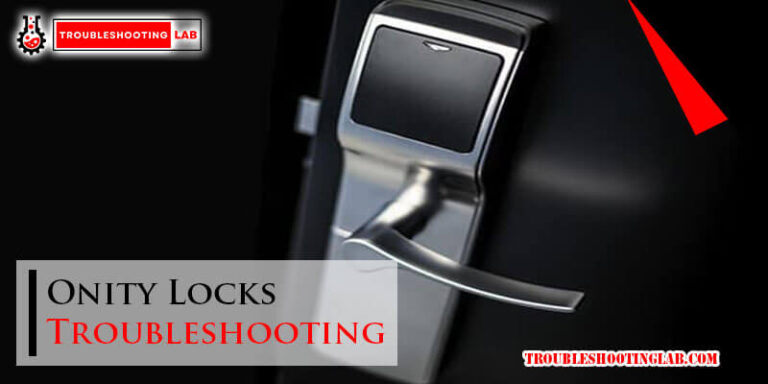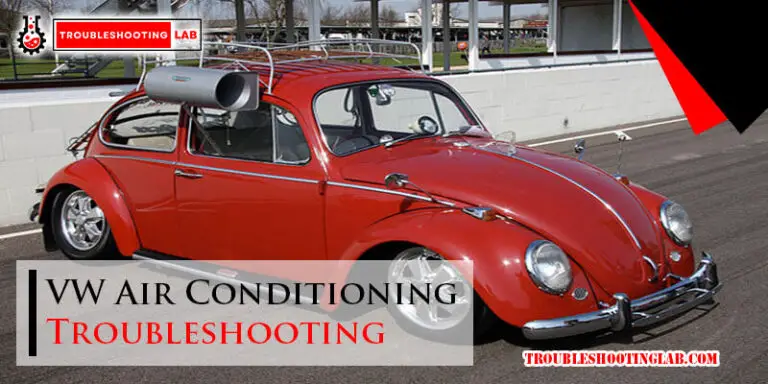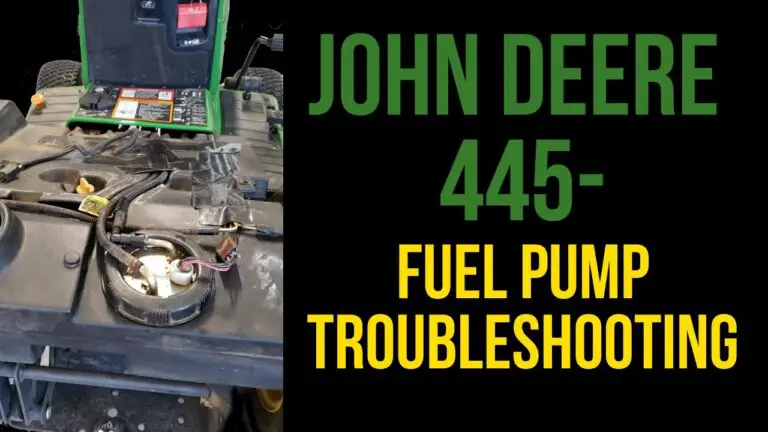Seadoo Troubleshooting Guide: Expert Tips for Smooth Sailing
Owning a Seadoo can be a thrilling experience. But sometimes, things go wrong.
In this Seadoo Troubleshooting Guide, we’ll help you diagnose common issues. Whether you’re a novice or seasoned rider, understanding your Seadoo is essential. This guide will provide easy-to-follow steps to identify and fix problems. From engine trouble to electrical issues, we cover it all.
Save time and avoid stress by learning how to troubleshoot your Seadoo like a pro. Let’s dive into solutions that keep your watercraft running smoothly.
Introduction To Seadoo Troubleshooting
Seadoo watercrafts are popular for their performance and fun on the water. But like any machine, they can have issues. Knowing how to troubleshoot these problems is essential. This guide helps you diagnose and fix common Seadoo problems.
Common Issues
Seadoo watercrafts can face several common issues. One frequent problem is engine starting trouble. This can be due to a dead battery or a faulty spark plug. Another common issue is overheating. This can happen if the cooling system is blocked or the impeller is damaged. Fuel system problems are also common. They can cause the engine to sputter or stall. Check the fuel filter and fuel pump for any blockages or damage.
Importance Of Regular Maintenance
Regular maintenance is crucial for your Seadoo’s performance. It helps prevent many common problems. Regularly check and change the engine oil. This keeps the engine running smoothly. Inspect the spark plugs and replace them if needed. Check the cooling system for any blockages. Clean the jet pump and inspect the impeller for damage. Regular maintenance can extend the life of your Seadoo. It ensures you have a fun and safe time on the water.
Engine Problems
Seadoo engines are powerful, but they can sometimes face problems. Understanding these issues is crucial to keep your watercraft running smoothly. This section will help you troubleshoot common engine problems.
Starting Issues
If your Seadoo won’t start, it could be due to several reasons. Here are some common causes and solutions:
- Battery Problems: Ensure the battery is fully charged. Check the connections for corrosion.
- Fuel System: Ensure there’s enough fuel. Check the fuel lines for blockages or leaks.
- Spark Plugs: Inspect the spark plugs. Clean or replace them if they are dirty or worn out.
- Starter Motor: Listen for a clicking sound. If you hear it, the starter motor may need replacement.
Overheating
Overheating can damage the engine. It’s important to address it quickly. Here are common reasons for overheating:
- Cooling System Blockage: Check for debris in the cooling system. Clean any blockages.
- Low Coolant Levels: Ensure the coolant level is adequate. Top up if necessary.
- Faulty Thermostat: The thermostat regulates engine temperature. Replace it if it’s not working properly.
Strange Noises
Unusual noises can be a sign of engine trouble. Here are some noises and their possible causes:
| Noise | Possible Cause |
|---|---|
| Knocking Sound | Low oil levels or worn engine parts |
| Squealing Noise | Loose or worn belts |
| Grinding Sound | Issues with the starter motor or bearings |
Addressing these issues promptly can prevent further damage to your Seadoo engine.
Electrical System Glitches
Electrical system glitches in your Seadoo can cause many issues. They might even prevent your watercraft from starting. Identifying and fixing these problems is essential for a smooth ride. Below we discuss common electrical system problems and their solutions.
Battery Problems
The battery is crucial for your Seadoo’s electrical system. A dead battery means your Seadoo won’t start. Here are some common battery issues:
- Corroded terminals: Clean them with a wire brush.
- Loose connections: Tighten all battery connections.
- Old battery: Replace if it’s more than three years old.
Always check the battery voltage. It should be between 12.6 and 12.8 volts when fully charged.
Faulty Wiring
Faulty wiring can lead to various electrical issues. Inspect all wires for:
- Frayed wires: Repair or replace them.
- Loose connections: Ensure all connections are secure.
- Corrosion: Clean any corroded connections.
Use a multimeter to check for continuity in the wires. If the wiring is intact, the multimeter will beep, indicating no breaks.
Blown Fuses
A blown fuse can cause an electrical component to stop working. Here’s how to check:
- Locate the fuse box.
- Remove the suspected fuse.
- Inspect the fuse for a broken wire.
If the wire inside the fuse is broken, replace the fuse with one of the same rating. Always carry spare fuses to avoid being stranded.

Credit: www.cdielectronics.com
Fuel System Troubles
Seadoo fuel system troubles can disrupt your boating experience. Identifying and fixing these issues ensures smooth sailing. This guide covers common fuel system problems and their solutions. Let’s explore the main culprits.
Fuel Pump Failure
A faulty fuel pump can cause engine performance issues. Symptoms include sputtering, stalling, or a complete failure to start. Check the pump for any signs of wear or damage. Ensure the connections are secure and there are no leaks.
If the pump is not functioning, replace it. Testing the fuel pressure can confirm if the pump is the problem. Consult your Seadoo manual for specific pressure requirements.
Clogged Fuel Lines
Clogged fuel lines restrict fuel flow to the engine. This can lead to poor performance or no start conditions. Inspect the fuel lines for any blockages or kinks. Replace any damaged or old lines.
Cleaning the lines can also help. Use a fuel system cleaner to remove debris and deposits. Regular maintenance prevents clogs and keeps your Seadoo running smoothly.
Carburetor Issues
Carburetor problems are common in older Seadoo models. Symptoms include rough idling, poor acceleration, or stalling. Check the carburetor for dirt or deposits. Cleaning it can often resolve these issues.
Rebuilding the carburetor may be necessary if cleaning does not help. Use a rebuild kit specific to your Seadoo model. Ensure all parts are correctly reassembled to avoid further problems.
Steering And Handling Issues
Experiencing steering and handling issues on your Seadoo can be frustrating. These problems can stem from various causes, affecting your ride’s safety and comfort. Below we explore common issues such as loose steering, vibrations, and difficulty turning. Identifying these issues early will help ensure a smoother, safer experience on the water.
Loose Steering
Loose steering can make it difficult to control your Seadoo. This issue might be due to:
- Worn or damaged steering cables
- Loose or misaligned handlebars
- Problems with the steering nozzle
Begin by checking the steering cables. If they are worn, replace them. Next, ensure the handlebars are tight and properly aligned. Finally, inspect the steering nozzle for any damage.
Vibrations
Vibrations during your ride can be unsettling and may indicate a deeper issue. Common causes include:
- Debris in the impeller
- Damaged or unbalanced impeller
- Loose engine mounts
First, check for and remove any debris from the impeller. If the impeller is damaged or unbalanced, it may need repair or replacement. Additionally, ensure the engine mounts are secure.
Difficulty Turning
If you find it hard to turn your Seadoo, it could be due to:
- Low steering fluid levels
- Obstructions in the steering mechanism
- Misaligned jet pump
Start by checking the steering fluid levels and top them up if necessary. Look for and remove any obstructions in the steering mechanism. Lastly, inspect the jet pump for alignment issues and adjust as needed.
Hull And Body Concerns
The hull and body of your Seadoo are critical for its performance. Addressing hull and body concerns ensures a smooth and safe ride. Below, we will explore common issues like cracks, leaks, corrosion, and wear and tear. This guide will help you identify and fix these problems.
Cracks And Leaks
Cracks in the hull can cause serious issues. Look for visible cracks on the hull’s surface. Small cracks can be fixed with marine-grade epoxy. For larger cracks, you may need professional help. Leaks are another common issue. Inspect the hull for any water seepage. Use a flashlight to check for leaks in dark areas. Seal minor leaks with waterproof sealant. If the leak is significant, consult a professional for repair.
Corrosion
Corrosion can weaken the structure of your Seadoo. Check for signs of rust or corrosion regularly. Focus on metal parts exposed to water. Clean these areas with a wire brush. Apply anti-corrosion spray to prevent future damage. Rinse your Seadoo with fresh water after each use. This reduces salt build-up, which causes corrosion.
Wear And Tear
Every Seadoo experiences wear and tear. Inspect the body for scratches and dents. Use marine polish to buff out minor scratches. For deeper scratches, consider using a fiberglass repair kit. Check the footwells for wear. Replace worn-out foot pads to ensure safety. Examine the seat for tears or damage. Replace or repair the seat cover as needed.
| Issue | Sign | Solution |
|---|---|---|
| Cracks | Visible lines on hull | Marine-grade epoxy or professional repair |
| Leaks | Water seepage | Waterproof sealant or professional repair |
| Corrosion | Rust on metal parts | Wire brush and anti-corrosion spray |
| Wear and Tear | Scratches, dents, worn foot pads | Marine polish, fiberglass repair kit, replace foot pads |
Routine Maintenance Tips
Maintaining your Seadoo ensures it performs well and lasts longer. Regular maintenance can prevent unexpected issues. Here are some essential tips for routine maintenance.
Regular Inspections
Inspect your Seadoo before and after each ride. Check the hull for cracks or damage. Look at the fuel lines and engine for leaks. Ensure the throttle and steering controls move smoothly.
Examine the battery for corrosion. Check the coolant levels and top up if needed. Regular inspections help catch problems early.
Cleaning And Lubrication
Rinse your Seadoo with fresh water after each use. Saltwater can cause corrosion. Use a mild soap to clean the exterior.
Lubricate moving parts like the steering nozzle and throttle cables. Use marine-grade lubricants. Lubrication prevents rust and keeps parts moving smoothly.
Storage Tips
Store your Seadoo in a dry, cool place. Use a cover to protect it from dust and UV rays. If storing for a long period, remove the battery. Store the battery in a cool, dry place.
Drain all water from the engine and exhaust. Add fuel stabilizer to the gas tank. This prevents fuel from going bad. Following these tips ensures your Seadoo stays in top shape.

Credit: www.speedstrap.com
When To Seek Professional Help
Seadoo troubleshooting can be challenging. Some issues need expert attention. Knowing when to call a professional can save time and money. It can also prevent further damage to your Seadoo.
Complex Repairs
Some repairs require advanced skills. Engine problems, electrical issues, or hull damage need a professional’s touch. These repairs often need special tools and knowledge. Attempting them yourself could worsen the problem. It’s best to get expert help for complex issues.
Warranty Considerations
Your Seadoo might still be under warranty. Attempting repairs on your own could void the warranty. Check your warranty details before fixing anything. Professional repairs keep your warranty intact. This can save you from costly repairs in the future.
Finding A Reliable Mechanic
Not all mechanics are equal. Find one with experience in Seadoo repairs. Ask for recommendations from friends or online forums. Read reviews and check credentials. A reliable mechanic ensures your Seadoo gets the best care. Your watercraft will be back in the water soon.

Credit: www.speedstrap.com
Frequently Asked Questions
Why Won’t My Seadoo Start?
Check the battery. It might be dead or have a loose connection. Also, inspect the starter motor.
How Do I Fix A Seadoo Overheating Problem?
Ensure the cooling system is clear of debris. Check the water intake for blockages and clean if needed.
What Causes A Seadoo To Lose Power?
Dirty spark plugs or fuel filters can cause power loss. Clean or replace them. Also, check the fuel quality.
Why Is My Seadoo Vibrating Excessively?
Excessive vibration may be due to a damaged impeller. Inspect and replace it if necessary. Also, check the drive shaft.
How Do I Troubleshoot Seadoo Electrical Issues?
Examine fuses and connections. Replace blown fuses and tighten any loose wires. Check the battery charge.
Conclusion
Fixing your Seadoo can be straightforward with our troubleshooting guide. Regular maintenance prevents many issues. Check fuel, battery, and fuses first. Always read your Seadoo manual for specific details. If problems persist, consult a professional. Keep your Seadoo in top shape for the best experience.
Happy riding!






